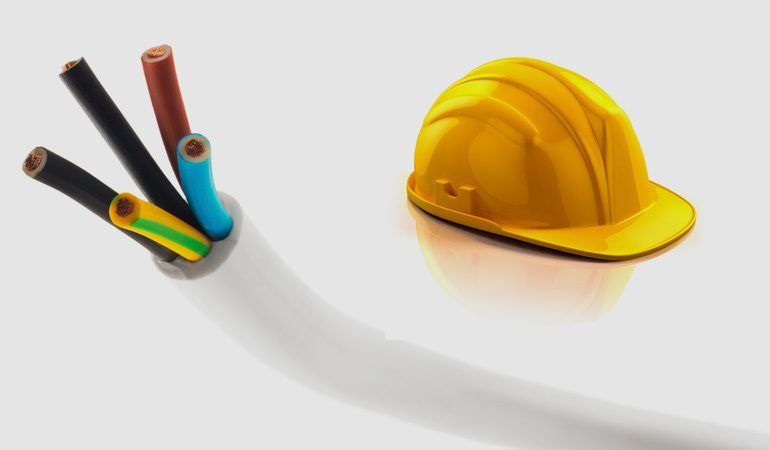
Occupational Health and Safety in the Installation of Wireless Communication Devices
Occupational health and safety in the installation of wireless communication devices should be considered from two different perspectives. The first is the safety of the person or persons performing the installation and the people and devices around during the installation, and the second is the health and safety of the people around during the use of the device.
ONE OF THE MAIN ISSUES TO BE CONSIDERED DURING INSTALLATION IS THE RULES FOR WORKING AT HEIGHT. THESE DEVICES ARE GENERALLY INSTALLED AT HIGH POINTS OF THE CEILING OR WALL OR IN HIGH EXTERNAL ENVIRONMENTS SUCH AS ROOFS, TOWERS, PYLONS. IN ADDITION, ELECTRICAL ENVIRONMENTS, RULES ON THE USE OF CUTTING AND PIERCING TOOLS AND GENERAL OCCUPATIONAL SAFETY RULES SHOULD ALSO BE TAKEN INTO CONSIDERATION.
- Ladders and similar tools that provide height to be used in indoor installations must comply with the standards and must be used in accordance with the user manual.
- In outdoor environments, devices such as tower cranes, basket cranes, ladders, etc. can be used, as well as installation on the roof with direct access. Appropriate safety belts and other personal protective equipment must be used in all cases.
- If drilling or welding is to be carried out, special precautions should be taken. Drilling and cutting tools must have protection parts attached. In addition, these operations should be carried out by personnel who have received the necessary training. Equipment to protect the eyes and face from parts and excessive light and gloves must be used during these operations.
- The installation area must be marked and people must be prevented from passing by or under the ladder or platform and possible risks must be eliminated.
- The platform must be moved when necessary for the installer to perform the installation in a comfortable position without sagging and creeping from the ladder or platform, otherwise it must not be allowed to be used.
- If an electrical device is used during installation, it should be ensured that the cables do not pose a risk in transitions. In addition, if the cable is wound on a reel, the reel must be fully opened and problems that may occur due to heat etc. effects must be eliminated.
- The device energy connection must be made when there is no energy on the line. If the line is energized, the fuse or switch must be turned off and an attendant must wait until the work is finished.
- Especially during the adjustment and commissioning of devices such as radio link etc. operating at high frequency and with high output power, it should be ensured that no one is in the broadcasting direction of the device. It is more important to protect these people, especially considering that the personnel performing the installation are very close to the device. If necessary, the person who will approach the device from the wrong place should be protected with protective equipment.
- It is especially important that the person who will be going up is healthy and in a state of concentration. Persons who are weak, offended, taking medication, dizzy, dizzy, epileptic, etc. and personnel who do not feel ready to work at height that day should not be forced to do the work.
- Care should be taken about slippery floors, especially when working on roofs. Work should be postponed when necessary, taking into account bird droppings, etc. and effects such as precipitation.
- Again, bird chaser devices should be kept ready against seagull harassment in the bushes and activated when necessary.
- If the device to be installed is too heavy for the installer to lift or impractical due to the difficulty of the installation location, additional measures should be taken for lifting.
AFTER THE INSTALLATION OF THE DEVICES IS COMPLETED, THE SYSTEM WILL BE COMMISSIONED AND THE DEVICES WILL OPERATE CONTINUOUSLY. THE ISSUES TO BE TAKEN INTO CONSIDERATION FOR AFTER THIS STAGE SHOULD ALSO BE PLANNED DURING THE INSTALLATION PHASE.
- The devices must be mounted securely so that they do not fall from their location. In addition, due to the possibility of the devices falling in the worst case, the location selection should be made carefully so that people and other devices will not be damaged.
- Electrical connections must be made using the correct consumables so as not to cause arcing.
- Grounding must be healthy.
- Connection points must be isolated and there must be no bare cables.
- Especially for high frequency and output power devices, a safe approach distance should be calculated and people should be prevented from being in these areas under normal conditions. If this barrier cannot be provided naturally, it must be provided with materials such as fences etc.
- All kinds of devices should be prevented from facing an area where a particular person or group is regularly and long-term, or at least closer than a certain distance. Particular attention should be paid to this issue in places such as counters and secretariats that require continuous sitting.
- Devices should be prevented from broadcasting at a higher power than permitted.
- The presence of electromagnetic waves higher than permitted in an environment should be prevented. People should be protected by making measurements when necessary.
- It should be ensured that the cables pass through the channel or pipe in a way that does not pose a threat to the passages.
- Care should be taken to ensure that cable cross-sections are appropriate.
- It is important that the devices are installed in such a way that they do not hit the head during transitions. Especially considering that the visually impaired cannot control the head level, the height should be taken into account in the installations and if a low installation is required, safety should be ensured by marking the walking track for the visually impaired.